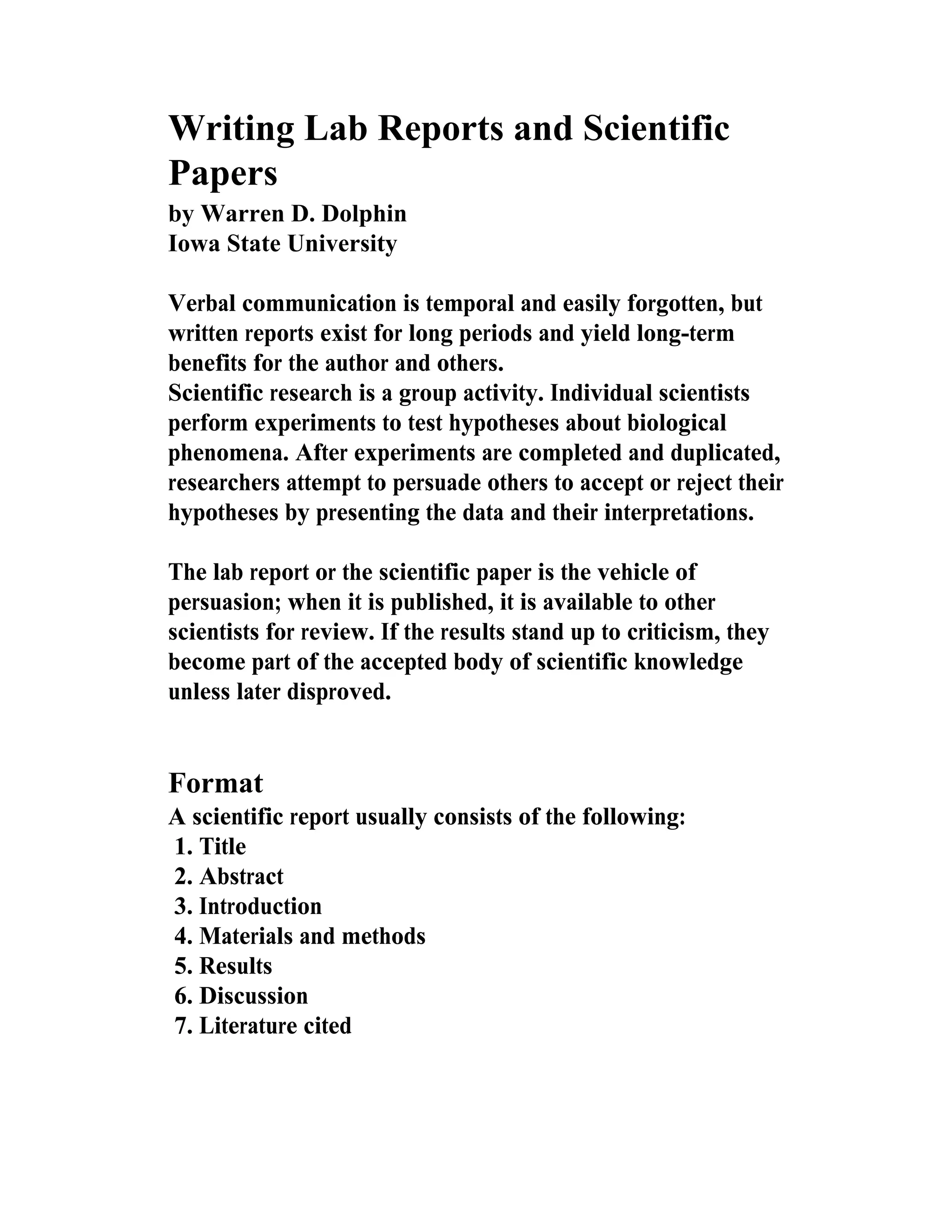1. The document discusses the importance and purpose of lab reports and scientific papers in communicating scientific research findings. These written reports allow information to be accessible over long periods of time.
2. Individual scientists perform experiments to test hypotheses, and present their findings in papers or reports to persuade others to accept or reject their hypotheses. If results stand up to criticism, they become accepted scientific knowledge.
3. A scientific report typically includes a title, abstract, introduction, materials and methods, results, discussion, and literature cited sections. The document provides guidance on writing each section effectively.






